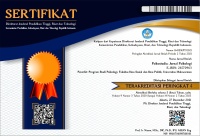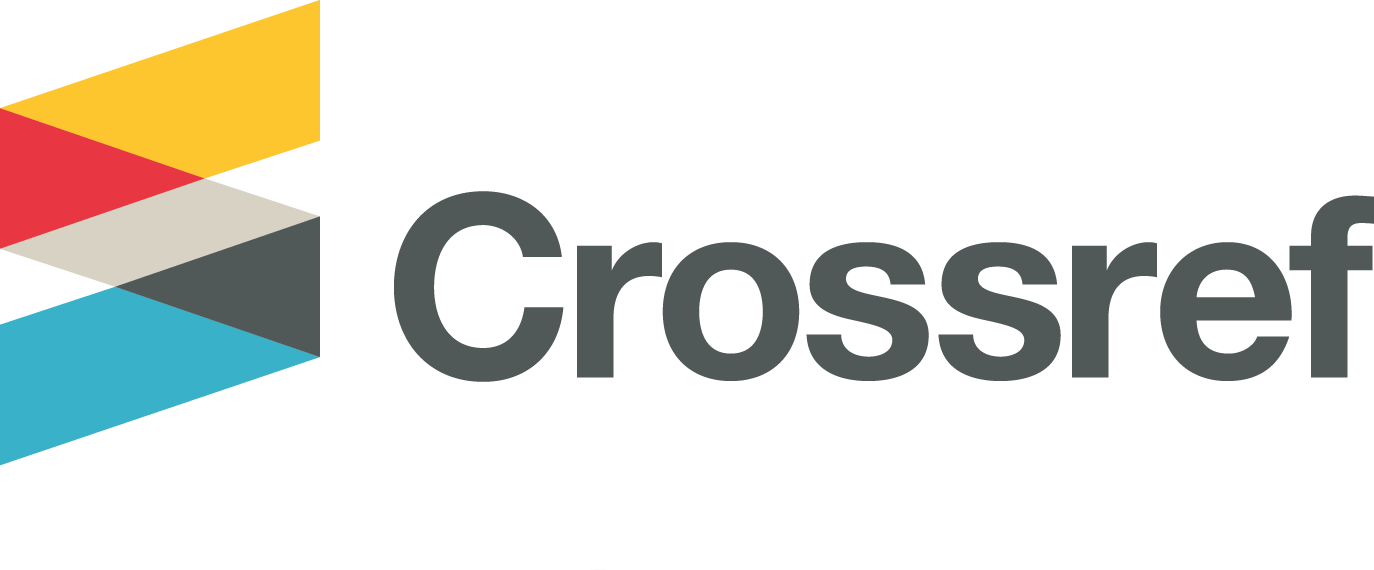The Application of Psychoanalytic Psychotherapy in Reducing Suicidal Ideation through Ego Functioning Enhancement: A Single-Subject Experiment
Abstract
Suicide is a complex mental health issue often associated with ego dysfunction, including affect regulation, impulse control, and defense mechanisms. This study aims to evaluate the application of psychoanalytic psychotherapy in enhancing ego function and reducing suicidal ideation in a final-year university student. The research employs a single-subject experimental design, measuring ego function before and after the intervention using the Ego Functioning Assessment (EFA). The subject underwent 10 sessions of psychoanalytic psychotherapy, focusing on intrapsychic conflict exploration, transference, and defense mechanisms. The results indicate a significant improvement in all aspects of ego function, particularly in impulse regulation, defense mechanisms, and cognitive processes, contributing to a reduction in the intensity of suicidal ideation. EFA scores showed substantial increases, and the subject transitioned from a neurotic personality organization to a normal personality organization. These findings suggest that psychoanalytic psychotherapy effectively strengthens ego function, which plays a crucial role in mitigating suicide risk. Future research is recommended to include a larger sample and longitudinal evaluation to validate these findings.
Bunuh diri merupakan masalah kesehatan mental yang kompleks dan sering dikaitkan dengan gangguan fungsi ego seperti regulasi emosi, kontrol impuls, dan mekanisme pertahanan diri. Penelitian ini bertujuan untuk mengevaluasi penerapan psikoterapi psikoanalisis dalam meningkatkan fungsi ego dan menurunkan ide bunuh diri pada seorang pasien berstatus mahasiswa semester akhir. Penelitian menggunakan eksperimen subjek tunggal dengan pengukuran fungsi ego dilakukan sebelum dan setelah intervensi menggunakan Ego Functioning Assessment (EFA). Subjek menjalani 10 sesi psikoterapi psikoanalisis yang berfokus pada eksplorasi konflik intrapsikis, transferensi, dan mekanisme pertahanan. Hasil penelitian menunjukkan adanya peningkatan dalam semua aspek fungsi ego, terutama dalam regulasi dan kontrol dorongan, mekanisme pertahanan, dan proses pemikiran yang berkontribusi pada penurunan intensitas ide bunuh diri. Skor EFA meningkat secara signifikan dan subjek mengalami transisi dari organisasi kepribadian neurosis ke normal. Temuan ini mengindikasikan bahwa psikoterapi psikoanalisis efektif dalam memperkuat fungsi ego yang berperan dalam mereduksi risiko bunuh diri. Penelitian ini merekomendasikan studi lebih lanjut dengan sampel yang lebih besar dan evaluasi jangka panjang untuk mengonfirmasi temuan ini.
Keywords
Full Text:
FULL TEXTReferences
Abdullahi, A. (2018). Determination of behaviour and impaired reality testing among clinically healthy individuals without any overt physical deformity, by physical stressors in the internal reality: Physical stress behavior psychoanalysis. Abuja, Nigeria: ResearchGate.
Alexander, F. , & F. T. M. (1946). Psychoanalytic therapy: Principles and application. The Ronald Press Co.
Balint, M. (1972). Focal psychotherapy: An example of applied psychoanalysis. Tavistock Publications.
Bellak, L., Hurvich, M., & Gediman, H. (1973). Ego function in schizophrenics, neurotics, normals. Wiley.
Bellak, L., & Sheehy, M. (1976). The broad role of Ego Functions Assessment. American Journal of Psychiatry, 133(11), 1259–1264. https://doi.org/10.1176/ajp.133.11.1259
Bilsker, D. , & M. J. (1991). Adaptive regression and ego identity. Journal of Adolescence, 14(1), 75–84.
Blatt, S. J., & Levy, K. N. (2003). Attachment Theory, Psychoanalysis, Personality Development, and Psychopathology. Psychoanalytic Inquiry, 23(1), 102–150. https://doi.org/10.1080/07351692309349028
Bridge, J. A., Goldstein, T. R., & Brent, D. A. (2006). Adolescent suicide and suicidal behavior. Journal of Child Psychology and Psychiatry, 47(3–4), 372–394. https://doi.org/10.1111/j.1469-7610.2006.01615.x
Briggs, S., Netuveli, G., Gould, N., Gkaravella, A., Gluckman, N. S., Kangogyere, P., Farr, R., Goldblatt, M. J., & Lindner, R. (2019). The effectiveness of psychoanalytic/psychodynamic psychotherapy for reducing suicide attempts and self-harm: systematic review and meta-analysis. The British Journal of Psychiatry, 214(06), 320–328. https://doi.org/10.1192/bjp.2019.33
Carlton, N. R. (1996). Ego functions in art therapy: Utilizing ego strengths and weaknesses in treatment [Master’s Thesis]. Hahnemann University.
Corbin, E. I. (1974). The autonomous ego functions in creativity. Journal of the American Psychoanalytic Association, 22(3), 568–587.
Ermawati, S., Moediarso, B., & Soedarsono, S. (2018). Hubungan jenis kelamin, usia dan pekerjaan dengan kejadian asfiksia gantung diri di rsud dr soetomo tahun 2013-2016. Indonesian Journal of Legal and Forensic Sciences (IJLFS), 8(1), 12. https://doi.org/10.24843/IJLFS.2018.v08.i01.p04
Febianti, H. N., Probowati, Y., & Elisabeth, M. P. (2024). Identification of Psychological Factors That Cause And How to Handle Suicide in South Korea Based on Psychological Autopsi. Psikostudia : Jurnal Psikologi, 13(1), 111–116.
Ferenczi, S. (1926). Further Contributions to the Theory and Technique of Psycho-analysis. Routledge.
Fonagy, P., & Bateman, A. (2016). Mentalization-based treatment: A practical guide. Oxford University Press, Inc.
Freud, S. (1923). Ego dan id. In M. F. Siraj (Ed.), Edisi Bahasa Indonesia Karya Psikologis Lengkap dari Sigmund Freud (EBI-Freud) (Vol. 19). Penerbit Minerva.
Freud, S. (1937). Analisis dapat dihentikan dan tidak dapat dihentikan. In M. F. Siraj (Ed.), Edisi Bahasa Indonesia Karya Psikologis Lengkap dari Sigmund Freud (EBI-Freud) (Vol. 23). Penerbit Minerva.
Gabbard, G. O. (2004). Long-term psychodynamic psychotherapy: A basic text. American Psychiatric Publishing, Inc.
Idham, A., Rahayu, P., & Sumantri. (2019). Ide dan upaya bunuh diri pada mahasiswa. Intuisi: Jurnal Psikologi Ilmiah, 11(3), 177. http://journal.unnes.ac.id/nju/index.php/INTUISI
Katadata. (2023, October 18). Ada 971 kasus bunuh diri sampai Oktober 2023, terbanyak di Jawa Tengah. https://databoks.katadata.co.id/datapublish/2023/10/18/ada-971-kasus-bunuh-diri-sampai-oktober-2023-terbanyak-di-jawa-tengah
Luepnitz, D. A. (2002). Schopenhauer’s porcupines: Intimacy and its dilemmas. Basic Books.
Mirza, R., Sitorus, T. Y., Sitorus, R. A., Retta, C. T., Tarigan, N. B., & Nurhayani. (2022). Bagaimana Gambaran Proses Regulasi Emosi Pada Anak Yatim. Psikostudia: Jurnal Psikologi, 11(4), 647–657. https://doi.org/10.30872/psikostudia.v11i4
Mukaromah, I. T. (2020). Problem dan ide bunuh diri pada mahasiswa. https://eprints.ums.ac.id/87762/1/NASKAH%20PUBLIKASI.pdf
Munthalib, A. (2016). Menilik aspek-aspek sosial dalam pendidikan dasar dan menengah. Tarbawiyah, 13(2), 271–292.
Octavia, L. (2014). Pendidikan karakter berbasis tradisi pesantren. Rumah Kitab.
Onie, S. (2022). Indonesian National Suicide Prevention Strategy 2022: A Preliminary Report. https://doi.org/10.31234/osf.io/xhqgm
Rifayanti, R., Pulunggono, G. P., Farizka Azyza, Z., & Setiani, R. (2017). Penerapan konseling dan penentuan keinginan bunuh diri melalui alat proyeksi (suicidie desire projective) bagi individu yang teridentifikasi depresi 1). Psikostudia: Jurnal Psikologi, 6(1).
Sari, D. K. B., & Rohmah, F. A. (2023). Client Centered Therapy for Clients with a Diagnosis of Major Depression Client Centered Therapy Untuk Klien dengan Diagnosa Depresi Berat. Psikostudia Jurnal Psikologi, 12(4), 503–508. https://doi.org/10.30872/psikostudia.v12i4
Schechter, M., Ronningstam, E., Herbstman, B., & Goldblatt, M. J. (2019). Psychotherapy with Suicidal Patients: The Integrative Psychodynamic Approach of the Boston Suicide Study Group. Medicina, 55(6), 303. https://doi.org/10.3390/medicina55060303
Shedler, J. (2022). hat was then, this is now: Psychoanalytic psychotherapy for the rest of us. Contemporary Psychoanalysis, 58(2–3), 405–437.
Siraj, M. F. (2024). Kesehatan mental dan ragam persoalannya. Penerbit Minerva.
Van Orden, K. A., Witte, T. K., Cukrowicz, K. C., Braithwaite, S. R., Selby, E. A., & Joiner, T. E. (2010). The interpersonal theory of suicide. Psychological Review, 117(2), 575–600. https://doi.org/10.1037/a0018697
Vincent, N. , L. S. , & F. H. (2008). Barriers to engagement in sleep restriction and stimulus control in chronic insomnia. Journal of Consulting and Clinical Psychology, 76(5), 820–828.
WHO. (2014). Preventing suicide: A global imperative. http://www.who.int/mental_health/suicide-prevention/world_report_2014/en/
WHO. (2018). Suicide. https://www.who.int/publications/i/item/live-life-preventing-suicide
DOI: http://dx.doi.org/10.30872/psikostudia.v14i3.19106
Refbacks
- There are currently no refbacks.
Copyright (c) 2025 Muhammad Fakhrun Siraj, Mulya Virgonita I. Winta, & MM. Shinta Pratiwi

This work is licensed under a Creative Commons Attribution-ShareAlike 4.0 International License.
Psikostudia: Jurnal Psikologi is indexed by :
PSIKOSTUDIA: Jurnal Psikologi Published by Faculty of Social and Political Siences, University of Mulawarman, Samarinda, East Kalimantan and This work is licensed under a Creative Commons Attribution-ShareAlike 4.0 International License.
_________________________________________
PSIKOSTUDIA: Jurnal Psikologi
Department of Psychology
Faculty of Social and Political Siences, University of Mulawarman
Jl. Muara Muntai Kampus Gn. Kelua Samarinda 75411
Phone: +62 813 35350368
E-Mail: psikostudia@fisip.unmul.ac.id




















